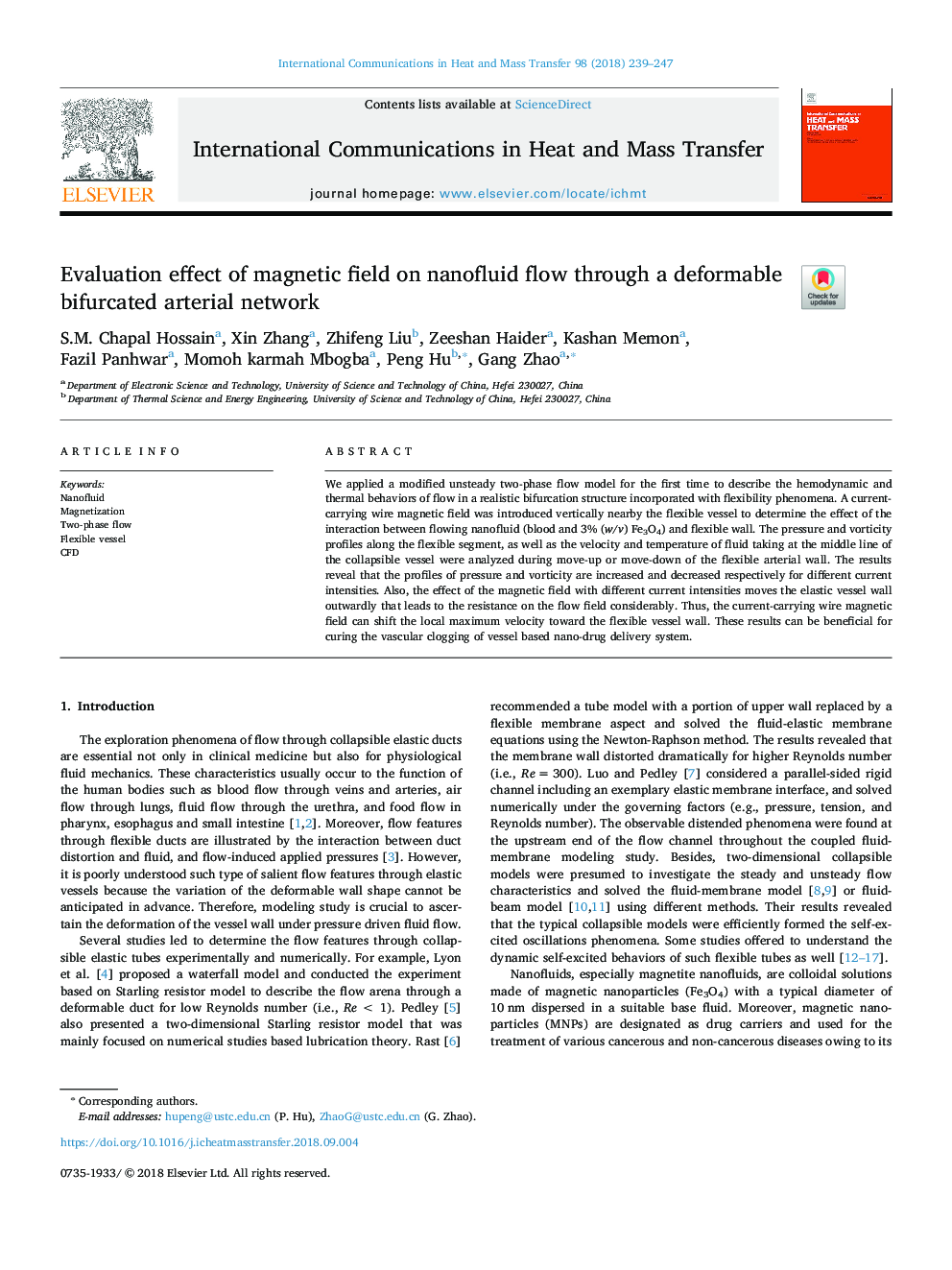| Article ID | Journal | Published Year | Pages | File Type |
|---|---|---|---|---|
| 11029990 | International Communications in Heat and Mass Transfer | 2018 | 9 Pages |
Abstract
We applied a modified unsteady two-phase flow model for the first time to describe the hemodynamic and thermal behaviors of flow in a realistic bifurcation structure incorporated with flexibility phenomena. A current-carrying wire magnetic field was introduced vertically nearby the flexible vessel to determine the effect of the interaction between flowing nanofluid (blood and 3% (w/v) Fe3O4) and flexible wall. The pressure and vorticity profiles along the flexible segment, as well as the velocity and temperature of fluid taking at the middle line of the collapsible vessel were analyzed during move-up or move-down of the flexible arterial wall. The results reveal that the profiles of pressure and vorticity are increased and decreased respectively for different current intensities. Also, the effect of the magnetic field with different current intensities moves the elastic vessel wall outwardly that leads to the resistance on the flow field considerably. Thus, the current-carrying wire magnetic field can shift the local maximum velocity toward the flexible vessel wall. These results can be beneficial for curing the vascular clogging of vessel based nano-drug delivery system.
Related Topics
Physical Sciences and Engineering
Chemical Engineering
Fluid Flow and Transfer Processes
Authors
S.M. Chapal Hossain, Xin Zhang, Zhifeng Liu, Zeeshan Haider, Kashan Memon, Fazil Panhwar, Momoh karmah Mbogba, Peng Hu, Gang Zhao,
